
Jean Schwartz was a Hungarian-born Jewish American composer and pianist. He is best known for his work writing the scores for more than 30 Broadway musicals, and for his creation of more than 1,000 popular songs with the lyricist William Jerome. Schwartz and Jerome also performed together on the vaudeville stage in the United States; sometimes in collaboration with Maude Nugent, Jerome's wife, and the Dolly Sisters. Schwartz was married to Jenny Dolly from 1913-1921.

Sigmund Romberg was a Hungarian-born American composer. He is best known for his musicals and operettas, particularly The Student Prince (1924), The Desert Song (1926) and The New Moon (1928).
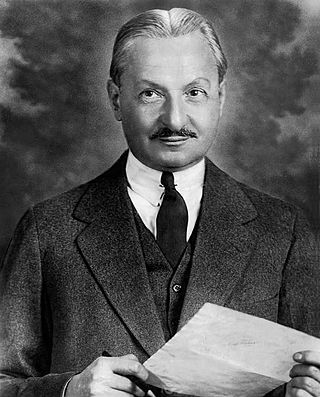
Florenz Edward Ziegfeld Jr. was an American Broadway impresario, notable for his series of theatrical revues, the Ziegfeld Follies (1907–1931), inspired by the Folies Bergère of Paris. He also produced the musical Show Boat. He was known as the "glorifier of the American girl". Ziegfeld is a member of the American Theater Hall of Fame.

Bert Kalmar was an American songwriter, who was inducted into the Songwriters Hall of Fame in 1970. He was also a screenwriter.

A revue is a type of multi-act popular theatrical entertainment that combines music, dance, and sketches. The revue has its roots in 19th century popular entertainment and melodrama but grew into a substantial cultural presence of its own during its golden years from 1916 to 1932. Though most famous for their visual spectacle, revues frequently satirized contemporary figures, news or literature. Similar to the related subforms of operetta and musical theatre, the revue art form brings together music, dance and sketches to create a compelling show. In contrast to these, however, revue does not have an overarching storyline. Rather, a general theme serves as the motto for a loosely related series of acts that alternate between solo performances and dance ensembles.
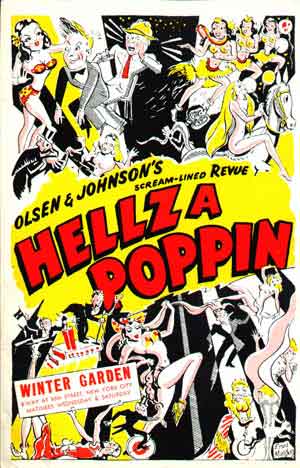
Hellzapoppin is a musical revue written by the comedy team of Olsen and Johnson, consisting of John "Ole" Olsen and Harold "Chic" Johnson, with music and lyrics by Sammy Fain and Charles Tobias. The revue was a hit, running for over three years, and was at the time the longest-running Broadway musical, with 1,404 performances, making it one of only three plays to run more than 500 performances in the 1930s.
The Shubert family was responsible for the establishment of the Broadway district, in New York City, as the hub of the theatre industry in the United States. They dominated the legitimate theatre and vaudeville in the first half of the 20th century, promoting entertainment attuned to popular taste.
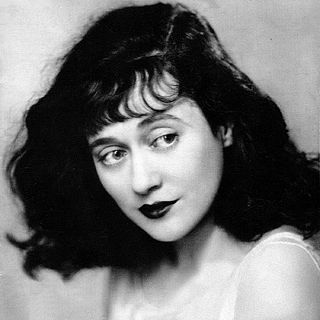
Lena Corinne "Lee" Morse was an American jazz and blues singer-songwriter, composer, guitarist, and actress. Morse's greatest popularity was in the 1920s and early 1930s as a torch singer, although her career began around 1917 and continued until her death in 1954.

Mary Eaton was an American stage actress, singer, and dancer in the 1910s and 1920s, probably best known today from her appearance in the first Marx Brothers film, The Cocoanuts (1929). A professional performer since childhood, she enjoyed success in stage productions such as the Ziegfeld Follies. She appeared in another early sound film, Glorifying the American Girl (1929). Her career declined sharply during the 1930s.

The Passing Show of 1918 is a Broadway musical revue featuring music of Sigmund Romberg and Jean Schwartz, with book and lyrics by Harold Atteridge. The show introduced the hit songs "I'm Forever Blowing Bubbles" and "Smiles".
Pearl Eaton Levant was an American Broadway performer, actress, choreographer, and dance supervisor of the 1910s and 1920s.
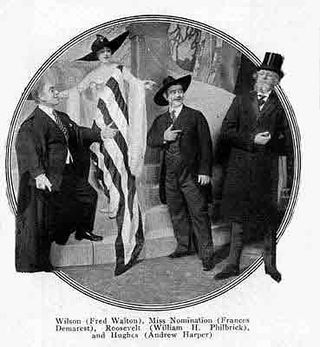
The Passing Show of 1916 is a revue featuring the music of Sigmund Romberg and Otto Motzan, with book and lyrics by Harold Atteridge. It included the first George Gershwin songs introduced in a Broadway show.
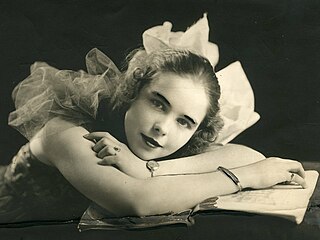
Gloria Foy was an American dancer, singer, vaudeville performer, and star of musical revues. Her family were theatrical people. Her father was Harry Foy, but she was no relation to the more famous Eddie Foy.
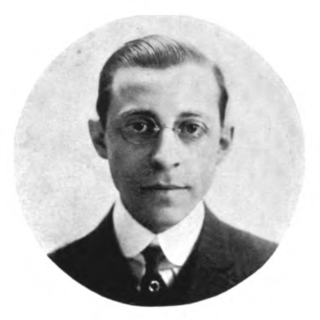
David Stamper was an American songwriter of the Tin Pan Alley and vaudeville eras, a contributor to twenty-one editions of the Ziegfeld Follies, writer for the Fox Film Corporation, and composer of more than one thousand songs, in spite of never learning to read or write traditional music notation. He may have written "Shine On Harvest Moon", a claim supported by vaudeville performer and writer Eddie Cantor. He was also a charter member of the American Society of Composers, Authors and Publishers or ASCAP.

Sam H. Harris was a Broadway producer and theater owner.
Harold Richard Atteridge was an American composer, librettist and lyricist primarily for musicals and revues. He wrote the book and lyrics for over 20 musicals and revues for the Shubert family, including several iterations of The Passing Show.

Willie Howard and Eugene Howard, billed as the Howard Brothers, were Silesian-born American vaudeville performers of the first half of the 20th century. They were two of the earliest openly Jewish performers on the American stage.
Jesse C. Huffman (1869–1935) was an American theatrical director. Between 1906 and 1932 he directed or staged over 200 shows, mostly for the Shubert Brothers. Many of them were musical revues, musicals or operettas. He is known for The Passing Show series of revues that he staged from 1914 to 1924 at the Winter Garden Theatre on Broadway, daring alternatives to the Ziegfeld Follies.
The Squab Farm was a comedic play about the film industry staged on Broadway in 1918. It was written by Fanny Hatton and Frederic Hatton, and staged at the Bijou Theatre on Broadway. It starred several former film directors as well as actress Alma Tell and a 16-year-old Tallulah Bankhead in her first stage role. She was reportedly chastised for whistling in the communal dressing room, unknowingly breaking one of the theater's oldest superstitions and fellow actress Julia Bruns took pity on her and invited to share her dressing room. George Foster Platt directed.

The Earl Carroll Vanities was a Broadway revue presented by Earl Carroll in the 1920s and early 1930s. Carroll and his show were sometimes controversial.















